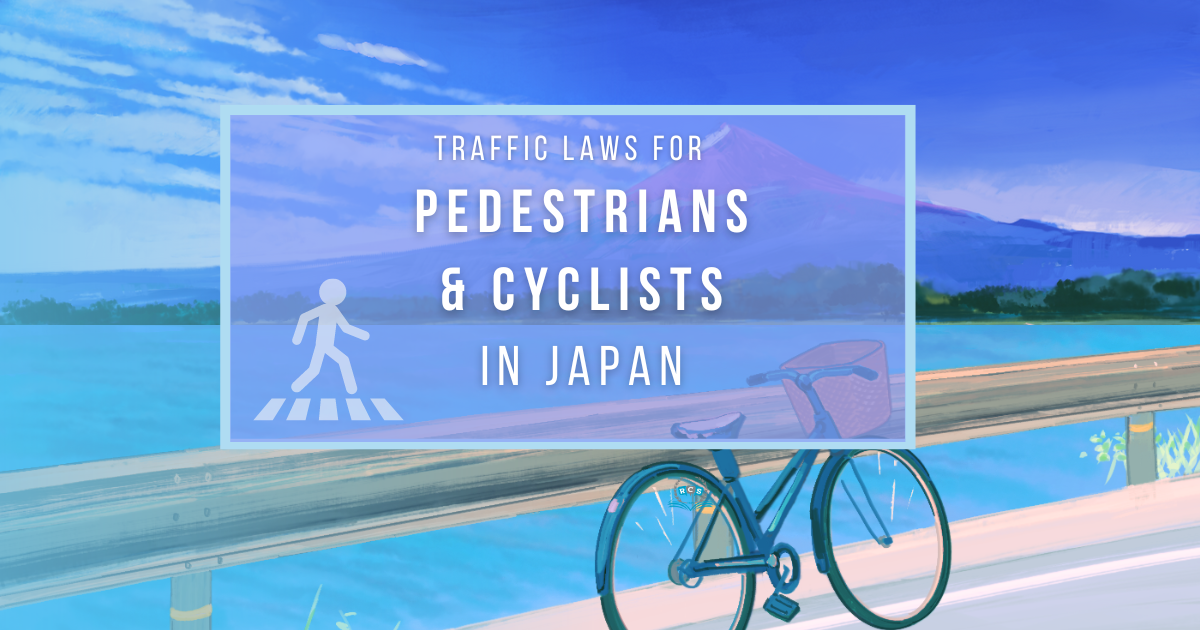

Traffic laws for Pedestrians and Cyclists in Japan

Japan is a country of order, precision and mutual benefits. A cog in a well oiled machine. One of the ways Japan keeps the traffic flow light is ensuring traffic and safety laws are ingrained in everyone from a young age. Walking and cycling are the most common transportation methods in Japan, so the whole comunity contributes to keep everyone is safe.
Pedestrian walking is one of those points. You may have seen those viral videos of kindergarteners bowing after crossing the street. This teaches children about how to cross the correct way.
Pedestrian rules in Japan
-
Walking on the left side
Many people like to travel on foot, and there is a specific way to do it. In any direction you are walking, it is advised to walk on the left, which is the same direction that cars go. This ensures that the walking traffic doesn’t get skewed, people who are running late or in a hurry can go faster. Always walk on your left.
-
Zebra crossing at the green light/ No jaywalking
In many countries, jaywalking is considered a crime. However, most people use it as a “suggestion”, and cross when there are no cars or slow traffic. And when one person does it, the others follow.
In Japan, even when its the middle of the night and no cars are around, people tend to wait for the green light in order to cross. This ensures safety and can prevent less accidents from happening. If there is no timer on the crossing, there is usually a button you can press for the traffic lights to change and allow you to cross.
-
The solid lines
Japan is a walkable city. So the majority of people will be walking on the streets. For bigger 2 lane streets, there are usually sidewalks where pedestrians can walk through. If there are no sidewalks available, you can walk in the space of the solid white line that is leeway for pedestrians.
-
Follow the flow
If you are commuting through the trains onto busy traffic roads, try to follow the flow of traffic. When you are late, you can speed walk or run, but do not do so if the flow of traffic is too high.
Cycling Laws in Japan
-
Do I need to wear a helmet in Japan?
Before, helmets were only suggested towards children ages under 13. Since April 1st of this year, helmets have become an ordinance for all bicycle riders regardless of age. It is not mandatory but it is heavily advised to wear one. “A duty to make an effort’ should be taken at face value. If you are a person who doesn’t wear one, please buy one if you live in a heavy car/bike traffic area.
-
Bike lanes in Japan
In most countries, the roads have bike lanes that bike riders are mandatory to use. However many cyclists tend to opt for the car lanes for both speed and safety. But in Japan, unless there is no bike lane available on the road, bikers must abide by riding on the bike lane. When there are no bike lanes on the road, bikers can ride on the sidewalk as long as it does not interfere with pedestrians.
-
No umbrellas while cycling
During the rainy season, you may need rain protection while cycling. You often see Japanese people riding their bike while holding an umberella. But there have been a large number of accidents happening because of this due to the lack of vision. If you need rain protection, please invest in a raincoat (or “kappa”), and basket covers. You can easily and cheaply acquire these at DAISO or other 100 yen stores.
-
Registering your bike and bike insurance in Japan
When you buy a bike in Japan, whether its from a second hand store or bike shop, you have the option to register and pay for bike insurance. You can pay for registration at the shop where you fill out the forms. These same forms are available at your local police box or ‘koban’ where you pay a registration fee.
-
No parking zones
Japan has many places to park your bike, some you have to pay for and some not. But if there are signs to not park, please do not do so. After 15 minutes, a security guard or police officer will place a slip on your bicycle to de-park from the spot within a specific time frame.
If you come back before the time frame, you are okay. If not your bike will be carted off to a bike park and you will have to ask the police officer where it is and pay a fine. The fine is usually not that expensive, but this experience is time-consuming and nerve-racking. Please bring your registration bike ID to recoup your bike.
Overall, the traffic laws are similar to other countries, but perhaps stricter than you are used to! If you are still unsure, please ask your local city hall about the traffic laws for pedestrians and cycling.
Author: S.C.Y.H – ALT in Musashino
Looking for a teaching job in Japan? Check out our ALT job page to apply to be part of our RCS team






